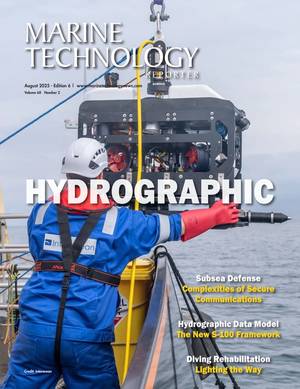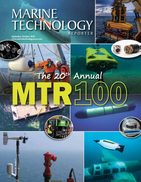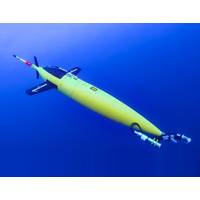
New Tech Frontiers for Ocean Gliders
Expanding the amount of work that gliders can do was a key topic at this year’s Marine Autonomous Technology Showcase.Building useful datasets that allow a better understanding ocean of ocean variables has long been a challenge. It’s not that long ago that ocean temperature data was limited to surface temperature and the same goes for many other parameters.But an increasing number of players, across science, defence and industry, are now able to access an increasing number of ways to gather data in the ocean, not least using gliders.With around two decades of their use now banked, users
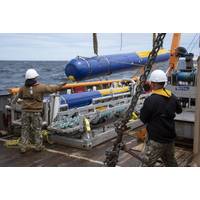
Subsea Defense: Navy Deepens Commitment to Underwater Vehicles
traditionally helped us know where something is, how far a way it is, and sometimes provides an image. But in addition to bearing and range, we can now determine what it is.”Scientists from the U.S. Naval Research Laboratory’s Ocean Sciences Division are optimizing the placement of ocean gliders and the usage of glider data to improve the Navy’s ability to predict ocean conditions. The Navy maintains a large fleet of ocean gliders for environmental measurement. Ocean gliders are slow-moving, long-endurance, underwater vehicles that gather data as they travel through the ocean&rsquo

WHOI Appoints Douglas C. Webb as Oceanographer Emeritus
work includes low-frequency acoustic sound sources used for water mass tracking, long range navigation, and tomography (SOFAR, RAFOS, Tonpilz), Vertical Current Meters (VCMs) to measure water chimney convection, profiling floats (ALACE and APEX) that evolved into the ARGO program, and the genesis of ocean gliders (Slocum). The sound sources are still in use today for a variety of applications. The VCMs morphed into the floats with the added capability of electromagnetic probes (EM-APEX) for water velocity measurements that are now air deployed from C-130 planes. Over the last 20 years of the Argo program
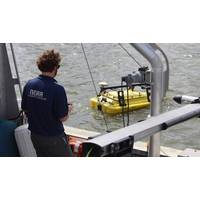
U.S. Navy, NOAA Strike Deal to Fast-Track Unmanned Maritime Systems
across the government, academia and private enterprise. A timely example of how NOAA and the Navy are working together with unmanned systems is the ocean unmanned glider project to improve hurricane prediction. For the third year, NOAA, the Navy, academia and private industry are deploying unmanned ocean gliders from the Caribbean Sea to the eastern seaboard that demonstrate unmanned maritime system’s observations can improve hurricane intensity forecasts.The new pact formalizes the Commercial Engagement Through Ocean Technology Act of 2018, that directs NOAA to coordinate with the Navy on a wide
'Unusual' Underwater Rivers Found Along Australia's Coastline
The University of Western Australia have discovered underwater rivers along most of Australia’s continental shelf that are unique and do not occur at this scale anywhere else in the world. The research has been published in Nature Scientific Reports.The discovery was made using UWA-operated ocean gliders - autonomous underwater vehicles (AUV) that propel themselves through the water and collect important data about our oceans. The gliders are also part of the national Integrated Marine Observing System.The underwater rivers form in winter months and are currently at their peak. They occur when

Hunting Hydrocarbons
in the 2000s, they’ve opened up new possibilities for ocean observation and monitoring. But, these possibilities are continuing to expand, including to gas seep surveys, leak detection, mammal monitoring and oil spill monitoring, for the offshore oil and gas industry.The primary attraction of ocean gliders is their ability to stay at sea for months, monitoring wide areas in remote locations down to significant depths. This is because they’re mode of propulsion is energy efficient. Rather than using a propeller to move through the water, gliders use changes in buoyancy which is converted into

Ocean Gliders: The New Storm Chasers
Unmanned ocean gliders go deep to help improve hurricane forecastsA fleet of 15 autonomous underwater vehicles (AUV), or gliders, will be deployed to collect important ocean data in the Caribbean Sea and tropical Atlantic Ocean that could prove useful to forecasters this hurricane season.NOAA, the U.S. Integrated Ocean Observing System and university partners will begin deploying the torpedo-shaped, remotely-operated, battery-powered gliders from vessels off Puerto Rico and the U.S. Virgin Islands in mid-July. Ten of the gliders will come from the U.S. Navy, and the others from NOAA.The gliders will

Ocean Microstructure Glider Workshop Announced
Rockland Scientific and the Bermuda Institute of Ocean Sciences announced a specialized training program for Rockland turbulence measurement systems that are integrated with ocean gliders. Ocean Microstructure Glider (OMG) 2018 will be hosted by the Mid-Atlantic Glider Initiative & Collaboration (MAGIC) at the Bermuda Institute of Ocean Sciences St. Georges, Bermuda from May 28 to June 1. Classroom and field training will be optimized for both scientists and technicians and facilitated by instrument specialists from Rockland Scientific. Fees to attend OMG 2018 are $1

Kongsberg to Market Two New Underwater Gliders
Kongsberg Underwater Technology, Inc. announced it has completed negotiations with CoMotion, the University of Washington’s collaborative innovation hub, to obtain the sole rights to produce, market and continue development of two new underwater glider systems. Ocean gliders are a specialized type of autonomous underwater vehicle (AUV). Rather than using a propeller to move through the water, they use fixed wings and changes in buoyancy to achieve both vertical and forward motion. The vehicles move through the water in a saw-tooth trajectory and surface periodically to communicate data

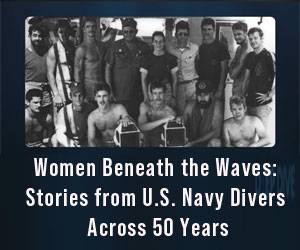

 August 2025
August 2025
